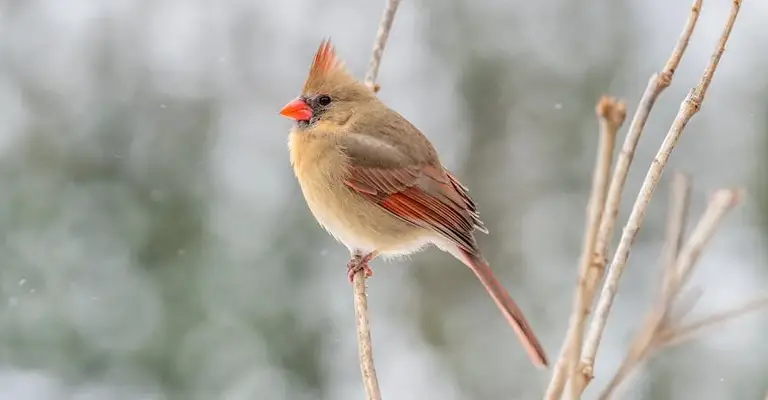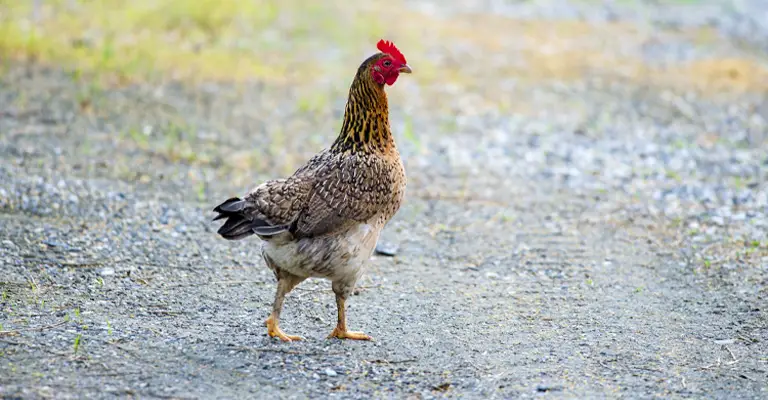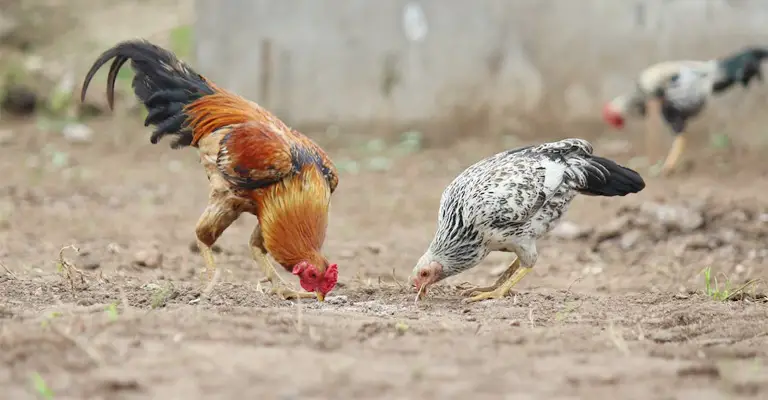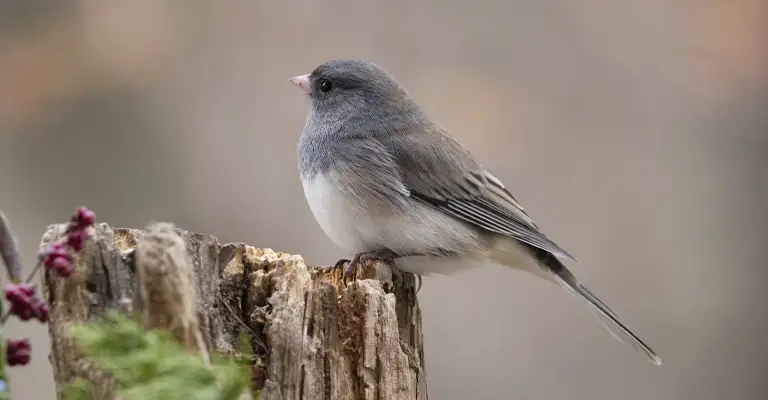From the majestic peacock to the tiny hummingbird, Birds come in a dazzling array of colors and species. However, one aspect that often piques our curiosity is the distinction between male and female birds.
While it may seem straightforward to identify the males with their flamboyant displays, the question remains: what is a female bird called?
In this article, we delve into the fascinating world of avian biology to uncover the answer. We explore the various terms used to describe female birds across different species and shed light on the reasons behind these distinctions.
From hens and peahens to hawks and falcons, we unravel the intricacies of gender nomenclature in the avian realm.
Join us on this captivating journey as we unravel the mystery of what a female bird is called and gain a deeper understanding of the diverse and enchanting world of our feathered friends.

What Is a Female Bird Called?
A female bird is commonly referred to as a hen. However, it’s important to note that the specific term used to describe a female bird can vary depending on the species. Here are some commonly used terms for female birds in different categories:
Domestic Birds
- Chicken: A female chicken is called a hen.
- Duck: A female duck is called a duck or a hen.
- Turkey: A female turkey is called a hen.
Birds of Prey
- Eagle: A female eagle is called an eagle or an eagle hen.
- Hawk: A female hawk is called a hawk or a hen hawk.
- Falcon: A female falcon is called a falcon or a falcon hen.
Water Birds
- Swan: A female swan is called a pen.
- Goose: A female goose is called a goose or a hen.
- Duck: A female duck is called a duck or a hen.
Songbirds
- Sparrow: A female sparrow is called a hen.
- Robin: A female robin is called a hen.
- Cardinal: A female cardinal is called a hen.
Why Are Female Birds Called Hens?

The term “hen” to refer to female birds has its origins in the English language and has been used for centuries. Here is a brief explanation of the history and origin of the name:
Old English
The word “hen” can be traced back to Old English, where it was originally used to refer to a female chicken. In Old English, the word was spelled as “henn” or “hænn.”
Germanic Roots
The Old English word “hen” has Germanic roots, specifically from the West Germanic language group. Similar words for “hen” exist in other Germanic languages, such as German “Henne” and Dutch “hen.”
Proto-Indo-European
The Germanic languages, including Old English, are part of the larger Indo-European language family.
The word “hen” likely has its roots in the Proto-Indo-European language, which is the reconstructed ancestral language of many modern languages spoken in Europe and parts of Asia.
Generalization to Other Birds
Over time, the term “hen” expanded beyond just chickens and became a more general term for female birds.
It is now commonly used to refer to female birds in various species, although specific terms may exist for certain bird groups or species.
Note that the term “hen” is not universally used for all female birds. Different bird species may have their own specific names for females, as mentioned earlier.
The use of “hen” as a general term for female birds is more prevalent in domestic bird species like chickens, where the term has been widely adopted.
How to Tell If a Bird Is Male or Female?

Determining the sex of a bird can be challenging, as it varies depending on the species. However, here are some general methods that can help you determine the sex of a bird:
Physical Differences
In some bird species, males and females have distinct physical characteristics. These differences can include variations in size, coloration, plumage patterns, beak shape, or the presence of specific features like crests or wattles.
Consulting a field guide or doing research on the specific bird species can provide insights into these differences.
Behavioral Differences
Males and females of certain bird species exhibit different behaviors. For example, males may engage in elaborate courtship displays, singing, or territorial behaviors to attract females. Observing the behavior of birds can sometimes provide clues about their sex.
Vocalizations
In some bird species, males and females have different vocalizations.
Males may have more complex or melodious songs, while females may produce simpler or different types of calls. Listening to the bird’s vocalizations can sometimes help in determining its sex.
DNA Testing
For accurate identification, DNA testing can be conducted. This involves collecting a small sample of the bird’s blood, feathers, or other tissues and sending it to a laboratory for analysis. DNA testing provides a definitive method to determine the sex of a bird.
Cloacal Examination
This method involves gently pressing the area around the bird’s cloaca, which is the opening used for excretion and reproduction.
In some bird species, males have a small, protruding structure called a cloacal protuberance, while females lack this feature. However, this method requires experience and caution to avoid causing harm to the bird.
Nesting Behavior
Observing the nesting behavior of birds can sometimes provide clues about their sex. In certain species, only females engage in nest-building activities, while males may assist in feeding or guarding the nest.
However, this method is not applicable to all bird species, as nesting behaviors can vary widely.
Breeding Pairs
In some cases, observing a pair of birds can help determine their sexes. If you observe a pair engaging in courtship or breeding behavior, it is likely that one bird is male and the other is female.
However, this method relies on observing the birds’ behavior over time and may not be applicable if only a single bird is present.
Why Are There So Many Different Names for Female Birds?

The existence of different names for female birds is primarily due to the vast diversity of bird species and the historical development of language. Here are a few reasons why there are multiple names for female birds:
Species Variation
Birds come in a wide range of species, each with its own unique characteristics and behaviors.
Different bird species may have distinct names for females based on their specific traits, such as size, coloration, or behavior.
These names often reflect the observations and cultural practices associated with those particular species.
Cultural and Regional Differences
Bird names can vary across different cultures and regions. Local languages and dialects may have their own specific terms for female birds, influenced by the local environment, traditions, and linguistic evolution.
This diversity of names adds richness to the understanding and appreciation of birds across different communities.
Historical Evolution
Bird names have evolved over time, influenced by various factors such as folklore, scientific discoveries, and linguistic changes.
As our understanding of birds has deepened, new names have emerged to describe different aspects of their biology, behavior, and roles within ecosystems. This ongoing evolution has contributed to the diversity of names for female birds.
Specific Traits and Roles
Female birds often have distinct characteristics and roles within their species. Some female birds, such as hens, are associated with egg-laying and nurturing offspring, while others may have unique behaviors or physical features. The names given to female birds often reflect these specific traits and roles.
What Is a Baby Bird Called?
A baby bird is commonly referred to as a chick. However, the specific term used to describe a baby bird can vary depending on the species. Here are some commonly used terms for baby birds in different categories:
Domestic Birds
- Chicken: A baby chicken is called a chick.
- Duck: A baby duck is called a duckling.
- Turkey: A baby turkey is called a poult.
Birds of Prey
- Eagle: A baby eagle is called an eaglet.
- Hawk: A baby hawk is called an eyas.
- Falcon: A baby falcon is called an eyas.
Water Birds
- Swan: A baby swan is called a cygnet.
- Goose: A baby goose is called a gosling.
- Duck: A baby duck is called a duckling.
Songbirds
- Sparrow: A baby sparrow is called a fledgling.
- Robin: A baby robin is called a nestling.
- Cardinal: A baby cardinal is called a nestling.
FAQs
Yes, there are bird species where the males take on the primary responsibility of incubating the eggs and caring for the young. This behavior is known as male parental care. Examples include certain species of seahawks, jacanas, and phalaropes.
No, not all female birds lay eggs. While egg-laying is a characteristic feature of most bird species, there are exceptions. Some bird species, such as the kiwi and the emu, are flightless and do not lay eggs. Instead, they give birth to live young.
Yes, female birds can sing, although the extent and complexity of their songs can vary among species. In some bird species, both males and females sing, while in others, only the males are known for their elaborate songs.
No, female birds are not always smaller than males. While sexual dimorphism, where males and females have different physical characteristics, is common in many bird species, the specific differences can vary.
Yes, some female birds can change their appearance during different seasons.
This phenomenon, known as seasonal plumage dimorphism, occurs in certain bird species where females exhibit different plumage colors or patterns during breeding and non-breeding seasons.
Bottom Line
The term used to describe a female bird varies depending on the species. From hens and peahens to falconesses and sows, the diversity of names reflects the unique characteristics and behaviors of each species.
Understanding the terminology associated with female birds not only enhances our knowledge of avian biology but also deepens our appreciation for the intricacies of nature’s design.
Whether you’re an avid birdwatcher or simply curious about the world around us, exploring the fascinating world of female bird nomenclature offers a glimpse into the rich tapestry of avian life.
So, the next time you encounter a female bird, you’ll have a better understanding of the appropriate term to describe her, adding another layer of wonder to your avian encounters.